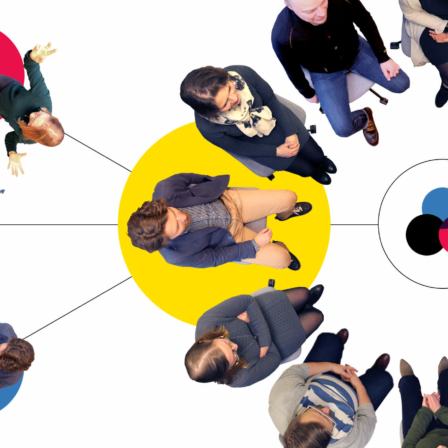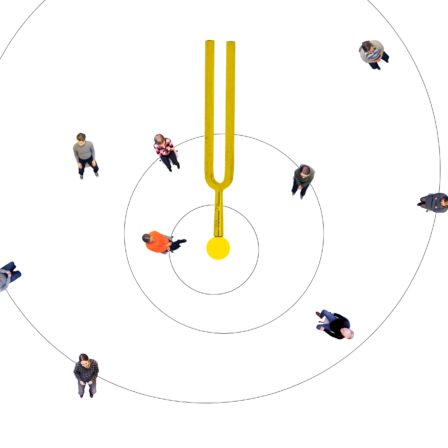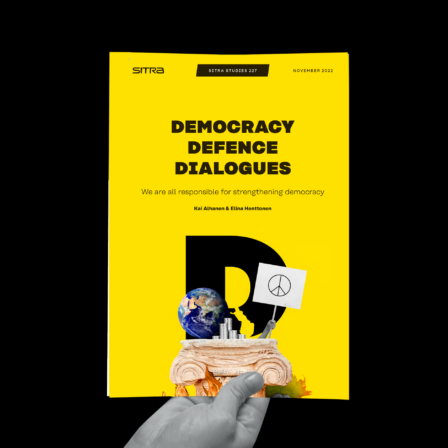An online discussion provides an excellent opportunity to bring together people with different backgrounds effortlessly, regardless of the place. An online discussion is an easier way to enable a large number of participants to join a dialogue than a face-to-face discussion and it is easy to organise with smaller resources. The threshold for participation can be made very low even for those who do not normally participate. Online discussions are a very visible part of the public discussion culture so we should strive to make them more constructive.
Some of the online discussions cannot be described as good in any way, but they can be made constructive with the help of the tools provided by Timeout. An online discussion can be used as a continuation of a face-to-face discussion to expand the number of participants and to deepen understanding. It can also be organised independently without a face-to-face conversation on a topic of which a better understanding is required.
How
The same Timeout tools that work in a face-to-face discussion also work in a constructive online discussion, but because you cannot hear the emphases and pauses made by the other participants or see their expressions, tuning into the discussion and the ground rules for a constructive discussion play an even bigger role. Putting things into words and providing summaries are an important part of facilitation during an online discussion.
You should choose a topic that interests a sufficiently large number of people. To define the topic, you can write an introduction or link the discussion to an existing article or material.
It is a good idea to schedule the online discussion. Choose a day and the time when you think the participants will have time to join a discussion that requires them to stay by a computer. Two hours is a good duration; it enables an in-depth discussion on the topic.
An online discussion can be implemented on any kind of platform. Facilitation is easier if the platform can be moderated beforehand, if it is possible to form comment chains and if participants can be “tagged” so that they can be easily spotted and the tagged participants receive a notification. The facilitator’s comments and the summaries made during the discussion should be made to stand out from the other comments, for example, by using boldface font or a different colour.
To ensure that people with diverse viewpoints will join the discussion, it is a good idea to make targeted invitations.
Tips
- Tuning into a constructive online discussion in which all participants are equals already begins in the invitations, continues in the introduction and must be constantly repeated in the course of the discussion.
- You should prepare for an online discussion particularly carefully by thinking about what kind of different points of view may be brought up and what issues are important to different groups.
- The emphasis in an online discussion is especially on listening and on finding the essence of the discussion. This is made easier by guiding the participants from talking about opinions to talking about experiences, by relating, which means reading the comments made by others and commenting them, and by emphasising the act of listening, for example, by asking specifying questions and addressing the participants by their names.
- The facilitator has an important role in putting into words what is said “between the lines” and in asking specifying questions to ensure the participants will be understood correctly. Irony and humour are often not understood by those participants of online discussions who do not know each other, so they should be avoided.
- Summaries of the content and the questions included in them enable people to share their experiences of the requested topics and take the discussion further. They also work well from the viewpoint of joining the discussion and make it easier for new participants to catch up with the discussion.
- You should be able to restrict the length of the comments to a maximum of 1,000 characters.
- Longer comments complicate both facilitation and following the discussion when the discussion is active.
- Discussions on topics that evoke strong emotions such as immigration, mines and large predators should first begin with a face-to-face Timeout session and then continue in a further discussion organised online. If the topic is a challenging one, it is a good idea to have more than one facilitator.
- If the discussion is extremely active, a large number of comments and the delay in publishing them may prevent the forming of a shared discussion. In that case, it is a good idea to slow down the discussion by, for example, asking the participants to focus on reading the comments others have made. You can ask them to make themselves a summary of what has already been discussed and to think about views that have not been brought up yet or views that are normally not discussed in connection with this topic.
- It is typical in an online discussion that only a fraction of the participants produces actual content. Most participants read comments and thus participate in the discussion as listeners. More quiet participants can be encouraged to join with similar questions as in a face-to-face discussion.
- Trolls are a typical feature of online discussions. The objective of trolling is not to participate in the discussion, but just to provoke the participants. If it benefits the discussion, you should also reply to those who appear to be trolls. The followers of the discussion also read the comments made by the trolls. In principle, you should assume that people mean well. This is also more likely to feed a positive cycle. If destructive comments occur in the discussion, you can remind the participants about the ground rules of discussion and summarise the main idea of the unconstructive comments (if there is one). Insulting speech against other participants must not be allowed. If necessary, you can deny the troll access to the discussion.
- If the discussion starts to get too heated, the facilitator can say this aloud, remind everyone about the ground rules and advise them to use their judgement.
- Tagging other participants to the discussion makes it possible to continue the discussion without every participant having to follow it actively all the time. When mentioned in the discussion, the participant receives a notification and can return to check how the discussion has evolved during his or her absence.
- The forming discussion chains help to guide the discussion on different topic areas to chains of their own and make the discussion easier to follow and participate in for both the facilitator and the participants.
- It is a good practice to participate in the discussion as a registered user, with one’s own name or using a recognised pseudonym. It enables the other participants to see who they are talking to. It is a good idea to encourage the use of one’s own name in online discussions.
- Familiarise yourself also with the three rules concerning dialogues in the digital world: never be arrogant, always try to understand the participant’s question in a positive way and always be honest.
































More tools
How to master a dialogue.